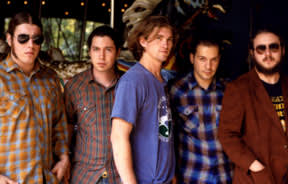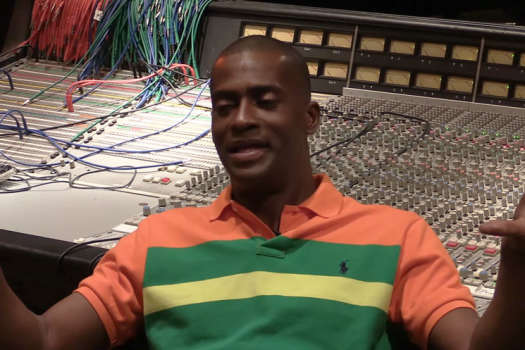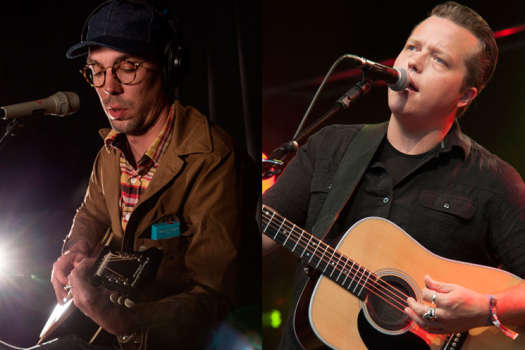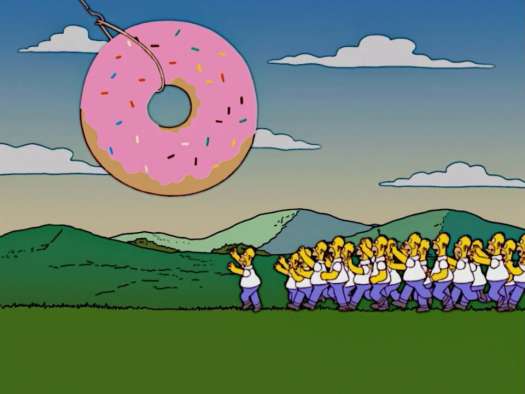"I don't know how familiar you are with our music, but I'm a big fan of reverb," My Morning Jacket's Jim James deadpans. The title of the band's third record, It Still Moves, could in fact describe the bouncing echo that resonates long after its final notes have faded. My Morning Jacket is the band equivalent of the Grand Canyon its sounds magnify tenfold, seemingly coming at you from all directions.
The reverb is just one distinct mark that James puts on everything he does; as on this new effort, his first two albums (1999's The Tennessee Fire and 2001's At Dawn) merged a definition of psychedelic from distinctly different eras: equal parts Neil Young and the Flaming Lips, filtered through a lens of classic Americana. "We live in a different world than the world that my favourite records were made in," he says. "For us to make records that I think sound good, we need to create our own world."
That's exactly what they did, on a farm near Shelbyville, Kentucky, just outside their home town of Louisville, where the band has constructed a studio atop a three-car garage owned by guitarist Johnny Quaid's grandparents. The key element to the farm is the variety of opportunities for reverb. "That whole garage we turn into a giant reverb chamber for the drums," James explains enthusiastically. "Pull all the cars out and mic it up. There are also a couple of silos out back, and we turn those into old-fashioned reverb chambers put a speaker in the bottom and throw a microphone up top."
By recording in this distinct space, My Morning Jacket creates their unique sound not one selected from a pull-down menu on ProTools. But while the wide-open spaces of Kentucky may have inspired Jim James he thought of recording in the silos because he used to retreat there for some quiet time, sitting alone singing and playing guitar My Morning Jacket are not some band of backwater Luddites. In fact, technological advancements are key to the ease of their efforts. "We ran some Ethernet cable out to the silo it was the cheapest, because we had to run 600 feet of cable out there." The result meant that they could easily send everything from a single snare hit to the entire album out to the silo for reverb treatment and back to the mixing board.
For anyone who has only heard their records, seeing them perform might come as surprise while their albums tend towards the laid-back vibe of Neil Young or even classic country influences, their live shows have become intense, flailing full-on rock freak-outs. It's a transformation that has intensified in the past couple of years, following the addition of drummer Patrick Hallahan. "We're five dudes in a van; we can't always convey everything live. We have to look at [performance] in a different sense you're trapped in a van all day, spending nights in different hotel rooms, so by the time we get on stage, we don't hold anything back. A record is going to last forever. We try to think about it and add everything that we want to hear forever whether we're here for 20 more years or two more days."
The reverb is just one distinct mark that James puts on everything he does; as on this new effort, his first two albums (1999's The Tennessee Fire and 2001's At Dawn) merged a definition of psychedelic from distinctly different eras: equal parts Neil Young and the Flaming Lips, filtered through a lens of classic Americana. "We live in a different world than the world that my favourite records were made in," he says. "For us to make records that I think sound good, we need to create our own world."
That's exactly what they did, on a farm near Shelbyville, Kentucky, just outside their home town of Louisville, where the band has constructed a studio atop a three-car garage owned by guitarist Johnny Quaid's grandparents. The key element to the farm is the variety of opportunities for reverb. "That whole garage we turn into a giant reverb chamber for the drums," James explains enthusiastically. "Pull all the cars out and mic it up. There are also a couple of silos out back, and we turn those into old-fashioned reverb chambers put a speaker in the bottom and throw a microphone up top."
By recording in this distinct space, My Morning Jacket creates their unique sound not one selected from a pull-down menu on ProTools. But while the wide-open spaces of Kentucky may have inspired Jim James he thought of recording in the silos because he used to retreat there for some quiet time, sitting alone singing and playing guitar My Morning Jacket are not some band of backwater Luddites. In fact, technological advancements are key to the ease of their efforts. "We ran some Ethernet cable out to the silo it was the cheapest, because we had to run 600 feet of cable out there." The result meant that they could easily send everything from a single snare hit to the entire album out to the silo for reverb treatment and back to the mixing board.
For anyone who has only heard their records, seeing them perform might come as surprise while their albums tend towards the laid-back vibe of Neil Young or even classic country influences, their live shows have become intense, flailing full-on rock freak-outs. It's a transformation that has intensified in the past couple of years, following the addition of drummer Patrick Hallahan. "We're five dudes in a van; we can't always convey everything live. We have to look at [performance] in a different sense you're trapped in a van all day, spending nights in different hotel rooms, so by the time we get on stage, we don't hold anything back. A record is going to last forever. We try to think about it and add everything that we want to hear forever whether we're here for 20 more years or two more days."




